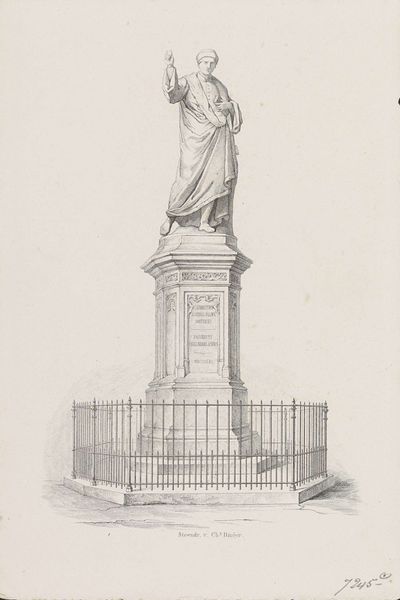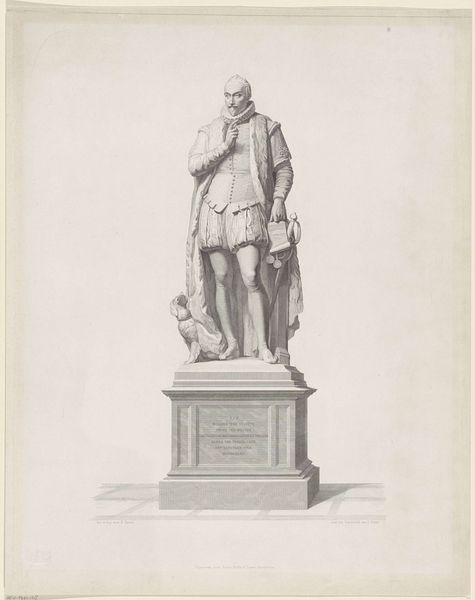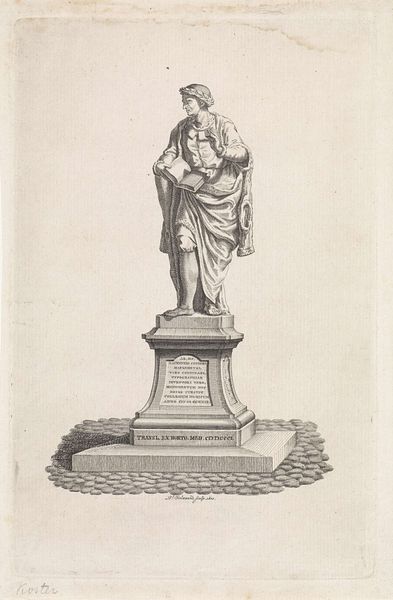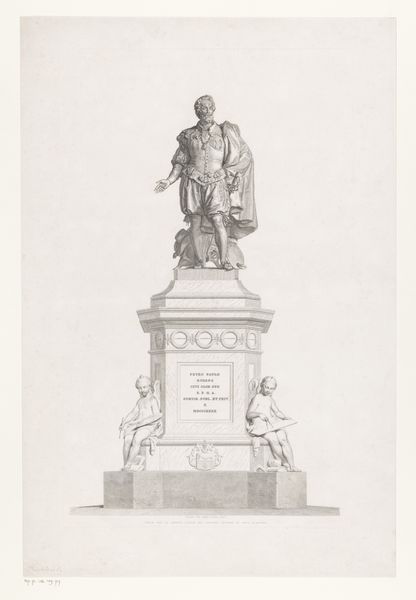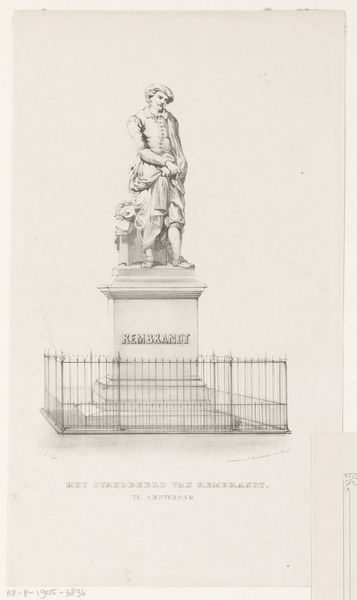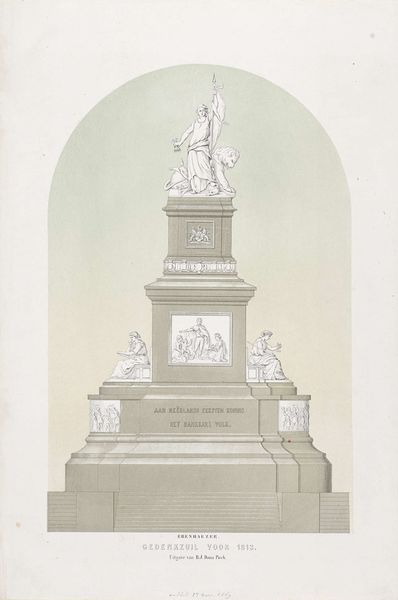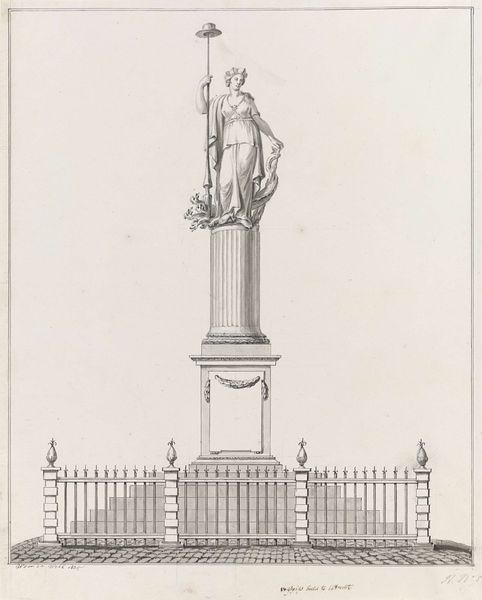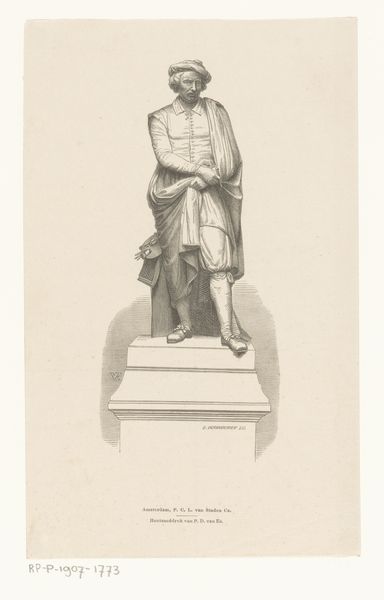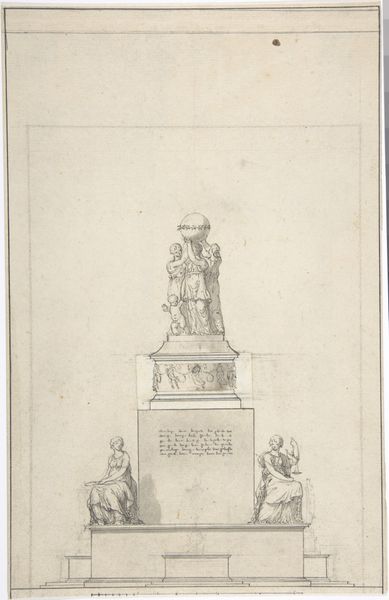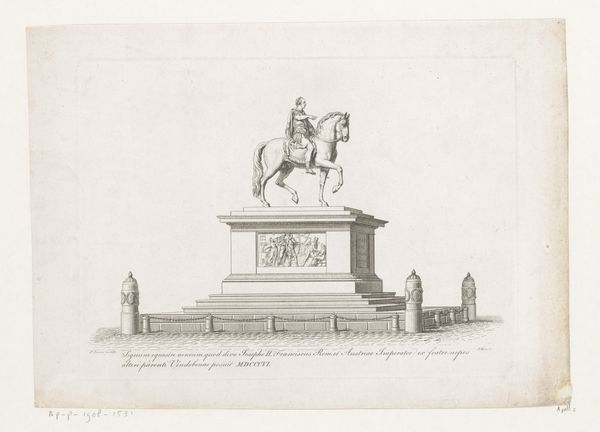
Standbeeld van Willem I, prins van Oranje, op het Plein te Den Haag 1848 - 1871
0:00
0:00
anonymous
Rijksmuseum
drawing, sculpture, pencil
#
portrait
#
drawing
#
neoclacissism
#
statue
#
sculpture
#
pencil
#
realism
Dimensions: height 409 mm, width 272 mm
Copyright: Rijks Museum: Open Domain
Curator: Looking at this drawing, my initial impression is one of quiet authority, though somewhat distant, rendered with incredible precision. Editor: Indeed. What we have here is a preparatory sketch from between 1848 and 1871 by an anonymous artist for a monument to Willem I, Prince of Orange, meant for the Plein in The Hague. The medium is primarily pencil. Its existing at the Rijksmuseum allows visitors to reflect on not only the finished bronze effigy but its conceptualization on paper. Curator: It's striking how the artist captured the symbolic weight of William: the steady gaze, the ceremonial sword, even the small dog, usually taken to signify loyalty at his feet all convey stability in the face of tumult. He presents a potent symbol of Dutch independence from Spain. Editor: Precisely, this drawing is exemplary of Neoclassical style with an emphasis on realism in portraiture, emphasizing Willem’s role as a figurehead in Dutch history. How interesting that this image comes at the threshold of modern Netherlands, more than two centuries after Willem's historical contribution. Think about how loaded an image like this would be for people. This wasn't just any sculpture, but part of an attempt to shape national identity! Curator: And observe the pose: classical contrapposto lending the statue a lifelike energy, even in repose. In terms of cultural memory, a work like this presents William less as a man than an archetype: a benevolent, almost divinely ordained, leader watching over his nation. The very absence of flourish enhances his silent decree. Editor: But think also of how this type of memorial—a statue atop a high pedestal—imposes a very specific kind of viewing. It demands the public gaze upwards, reifying Willem as an unassailable presence and historical inevitability, even after all of these years. I have to imagine the social statement in such public works. Curator: Absolutely. I am constantly intrigued by the ways such figures are distilled into pure image, emptied and refilled with cultural values, the man becoming entirely subsumed by his symbolic echo, amplified for generations. Editor: Which I think helps us to understand not only its initial impact but how these forms persist. An image of strength like this, it speaks volumes about national values in ways words alone can’t communicate.
Comments
No comments
Be the first to comment and join the conversation on the ultimate creative platform.
